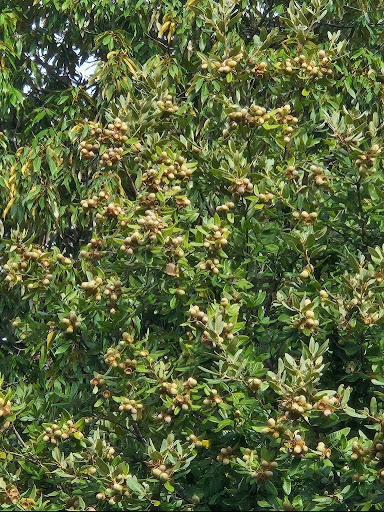Overview
A Discussion of Tanoak as the Ultimate in Slow Food (video/worksheet/discussion)

Author: Melodie George Moore (Hupa), Natalie Marie Scott (Hupa), Frederica Bowcutt PhD
Lesson partner: Rebecca Lowry, Humboldt County Office of Education
Grade(s): 6-8
Suggested Amount of Time: 2 days, 50 min increments
Curriculum Themes
- History
- Cultural Strengths
- Law/Government
- Relationship to Place
- Cross Curricular Integration
Learning Goals
Students will integrate information presented in different media or different formats to develop a coherent understanding of the importance of Tanoak acorns to people and to a healthy ecosystem.
Lesson Overview
Lessons in this unit could be used for a week, or up to a month. Students will receive a foundational understanding in Hupa culture, traditional ecological knowledge and environmental science. Opportunities for written/multimedia expression as well as critical thinking are integrated throughout lessons. This unit prepares students for the interactive “Life of an Acorn Game” unit. Authors recommended completing this unit before the game unit.
Essential questions:
Why do Hupa peoples prefer Tanoaks?
Why should I prefer/prioritize acorn trees over all other trees?
What are the expected results of promoting healthy acorn trees?
What do I need to understand to unlock the acorn as a food source?
Teacher Background
Tanoak (Notholithocarpus densiflorus) acorns formed the basis of a California Indian acorn economy for thousands of years. Today they remain a highly valued food among Indigenous tribal peoples. In northern California, at least after American settlement, salmon was the only other food consumed in larger quantities. Though indigenous peoples gathered and favored acorns from multiple oak species, northwestern tribes in particular often preferred tanoak when obtainable. (Bowcutt 2013)
Since the horticultural trade accidentally introduced the sudden oak death (SOD) pathogen to North America, over a million tanoaks have died … it continues to spread despite the efforts of landowners, scientists, and government agencies. Currently no cure exists for infected trees, and thus far tanoak exhibits little genetic resistance to the exotic water mold that causes the disease … Tanoak deserves more conservation attention due to its cultural and ecological importance. This magnificent tree, along with its relative American chestnut, reminds us that even common plants can rapidly become threatened. Fortunately, large areas with extensive tanoak stands remain uninfected.(Bowcutt 2013)
This unit studies the Tanoak’s worth not as a cash crop but as a ubiquitous, undervalued, underutilized food source. Students will learn about the environmental history of Tanoak by exploring the important human plant relationship that sustained food security and brought biodiversity and environmental stability to the region for thousands of years prior to American settlement. In sharing traditional ecological knowledge and principles of how to responsibly live within Tanoak landscapes, we hope to create a more balanced and safer future with fewer catastrophic wildfires. It is our belief that the resilient Tanoak has important timely information for those having to “think outside of the box” about how to live sustainably in a quickly changing landscape in California due to climate change. Ts’ehdiyah.